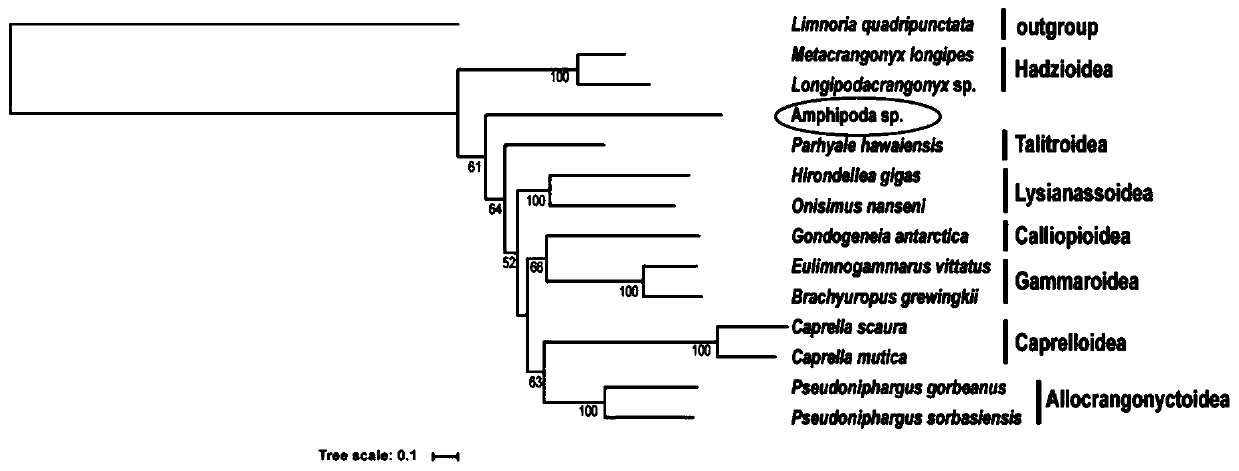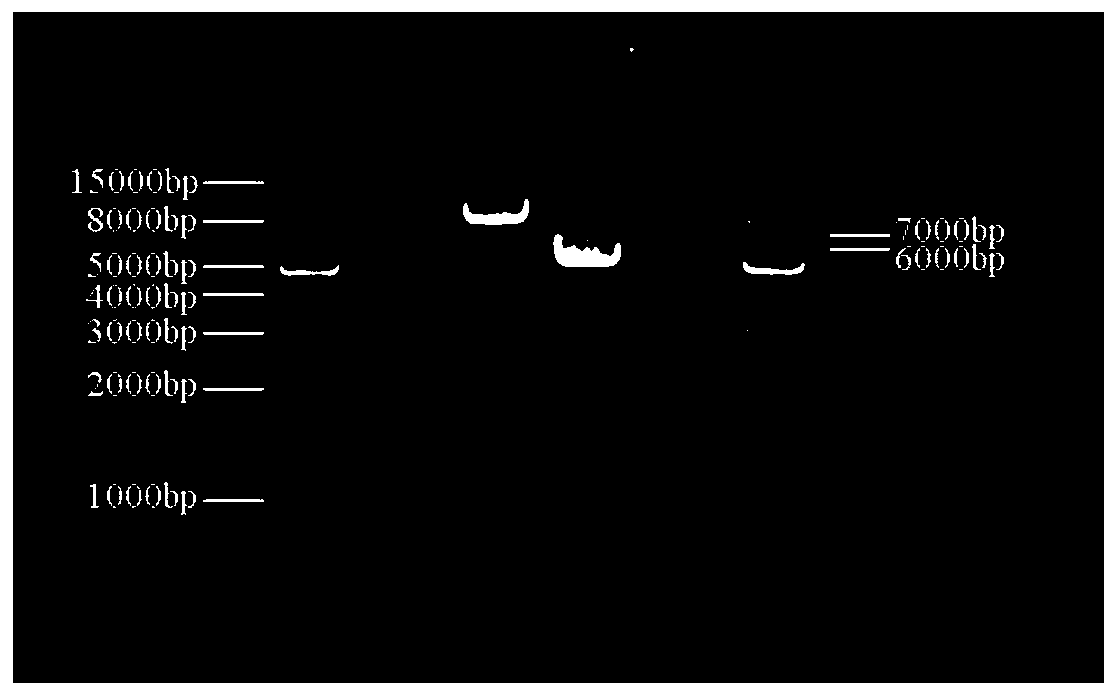Mitochondrial genome sequence from an abyssal new species
A technology of mitochondrial genome and genome sequence, which is applied in the fields of plant genetic improvement, genetic engineering, microbial measurement/inspection, etc., and can solve problems that have not been reported yet.
- Summary
- Abstract
- Description
- Claims
- Application Information
AI Technical Summary
Problems solved by technology
Method used
Image
Examples
Embodiment 2
[0086] 1. Sample collection: Use a trap to collect abyssal amphipods at 10908m in the Mariana Trench, and store the collected samples in a -80°C refrigerator.
[0087] 2. DNA extraction: use the SQ Tissue DNA Kit of OMEGA biotek to extract the genome of the small amphipods of the abyss, the specific method is as follows:
[0088] 1) Take 3mg of frozen samples of small amphipod tissue, put them into a 1.5ml sterilized centrifuge tube with 300μl WTL buffer, and cut the tissue with scissors after cleaning and burning;
[0089] 2) Add 5μl 20mg / ml proteinase K to the centrifuge tube, vortex for 15s; place at 60°C for more than 6 hours, and briefly centrifuge to remove the water droplets hanging on the tube wall;
[0090] 3) Cool the centrifuge tube to room temperature, add 100 μl of PCP buffer, vortex for 30 seconds, and ice-bath for 5 minutes;
[0091] 4) Centrifuge at a speed of 13000g for 3 minutes, transfer the supernatant to another sterile 1.5ml centrifuge tube, and discard ...
PUM
 Login to View More
Login to View More Abstract
Description
Claims
Application Information
 Login to View More
Login to View More - R&D
- Intellectual Property
- Life Sciences
- Materials
- Tech Scout
- Unparalleled Data Quality
- Higher Quality Content
- 60% Fewer Hallucinations
Browse by: Latest US Patents, China's latest patents, Technical Efficacy Thesaurus, Application Domain, Technology Topic, Popular Technical Reports.
© 2025 PatSnap. All rights reserved.Legal|Privacy policy|Modern Slavery Act Transparency Statement|Sitemap|About US| Contact US: help@patsnap.com



